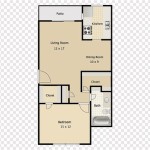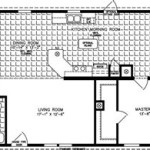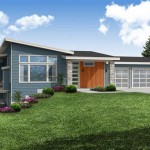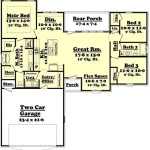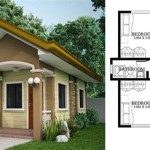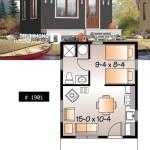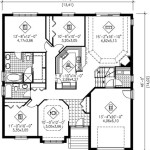3 Bedroom Bungalow Building Plan: A Comprehensive Guide
The 3-bedroom bungalow building plan is a popular choice for homeowners seeking a compact, efficient, and easily accessible living space. This design style offers a multitude of benefits, ranging from affordability and ease of construction to inherent energy efficiency and suitability for various life stages. Bungalows are characterized by their low-pitched roofs, wide eaves, and single-story layout, making them a particularly attractive option for families with young children, elderly individuals, or those with mobility limitations. Understanding the key considerations involved in selecting and implementing a 3-bedroom bungalow building plan is paramount to achieving a successful and satisfying outcome.
This article provides a comprehensive overview of the 3-bedroom bungalow building plan, covering its advantages, essential design elements, factors to consider during planning, and practical tips for successful implementation. It aims to equip the reader with the knowledge necessary to navigate the complexities of bungalow design and construction, ultimately leading to a home that perfectly aligns with their needs and preferences.
Key Advantages of a 3-Bedroom Bungalow
Choosing a 3-bedroom bungalow offers several compelling advantages, making it a practical and desirable option for a wide range of homeowners. These advantages extend beyond mere aesthetics and encompass financial, functional, and lifestyle benefits.
Firstly, the single-story layout of a bungalow inherently promotes accessibility. The absence of stairs eliminates potential hazards for young children and elderly individuals, and it facilitates ease of movement for those with mobility issues. This accessibility translates to increased safety and independence for all occupants.
Secondly, bungalows are generally more affordable to build and maintain than multi-story homes of comparable size. The simplified structural design reduces construction costs, and the smaller surface area minimizes heating and cooling expenses. Furthermore, maintenance is simplified due to the easy accessibility of all exterior elements, such as the roof and gutters.
Thirdly, bungalows often boast a strong connection to the outdoors. Their low profile and frequently incorporated design elements, such as verandas, patios, and large windows, encourage interaction with the surrounding environment. This connection to nature can enhance well-being and create a more relaxed and enjoyable living experience.
Finally, bungalows are adaptable to various architectural styles, allowing homeowners to customize their homes to reflect their personal tastes. Whether opting for a classic Craftsman bungalow, a modern minimalist design, or a traditional ranch-style layout, the 3-bedroom bungalow can be tailored to suit diverse aesthetic preferences.
Essential Design Elements of a 3-Bedroom Bungalow
The design of a 3-bedroom bungalow building plan involves careful consideration of various elements to ensure functionality, aesthetics, and efficient use of space. These elements work in harmony to create a comfortable and livable home.
The floor plan layout is crucial. A well-designed floor plan should prioritize flow and connectivity between different areas of the home. Open-concept living spaces, where the living room, dining area, and kitchen seamlessly blend together, are a popular choice for bungalows, as they maximize the feeling of spaciousness. Careful zoning of the bedrooms, bathrooms, and utility areas is also essential to ensure privacy and functionality.
Roof design plays a significant role in the overall aesthetic of a bungalow. Low-pitched roofs with wide eaves are characteristic features of this architectural style. Gable roofs, hip roofs, and shed roofs are commonly used, and the choice of roofing material can significantly impact the visual appeal and durability of the home.
Window placement and size are critical for natural light and ventilation. Large windows and strategically placed skylights can flood the interior with sunlight, reducing the need for artificial lighting. Proper ventilation is essential for maintaining indoor air quality and preventing moisture buildup.
Exterior finishes contribute to the overall curb appeal of the bungalow. Common exterior materials include brick, siding, stucco, and stone. The choice of materials and colors should complement the surrounding environment and reflect the homeowner's personal style.
Landscaping is an integral part of bungalow design. A well-landscaped yard can enhance the aesthetic appeal of the home, provide privacy, and create a more inviting outdoor living space.
Factors to Consider During Planning
Before embarking on the construction of a 3-bedroom bungalow, a thorough planning phase is essential to ensure a successful outcome. This phase involves considering various factors related to the site, budget, building codes, and personal preferences.
Site analysis is a critical first step. This involves assessing the topography, soil conditions, drainage patterns, and existing vegetation of the building site. The orientation of the site in relation to the sun is also important, as it can impact the energy efficiency of the home. Any potential environmental concerns, such as flood zones or proximity to wetlands, should be identified and addressed.
Budgeting is paramount to ensuring the project remains financially feasible. A detailed budget should be prepared, outlining all anticipated costs, including land acquisition, design fees, construction materials, labor, permits, and landscaping. It is prudent to allocate a contingency fund to cover unexpected expenses.
Compliance with building codes and regulations is mandatory. Local building codes dictate the minimum standards for construction, ensuring the safety and structural integrity of the building. Obtaining the necessary permits from the local authorities is essential before commencing any construction work.
Lifestyle considerations should factor prominently in the planning process. The design of the bungalow should reflect the specific needs and preferences of the occupants. Factors such as the size of the family, the number of guests typically entertained, and any specific hobbies or interests should be taken into account.
Future needs should also be considered. While the initial plan may cater to the current lifestyle, anticipating future changes, such as the arrival of children or the need for aging-in-place accommodations, can ensure the bungalow remains suitable for years to come.
Energy efficiency should be prioritized during the planning phase. Incorporating energy-efficient design features, such as proper insulation, energy-efficient windows, and solar panels, can significantly reduce energy consumption and lower utility bills.
Accessibility considerations should be addressed early in the design process, particularly if the home is intended for elderly individuals or those with mobility limitations. Features such as wheelchair ramps, grab bars, and wider doorways can enhance accessibility and promote independence.
Sustainability is an increasingly important consideration for homeowners. Sustainable building practices, such as using recycled materials, conserving water, and minimizing waste, can reduce the environmental impact of the construction project.
Selecting the right building team is crucial for the success of the project. Engaging experienced architects, engineers, and contractors who have a proven track record of building 3-bedroom bungalows is essential. Clear communication and collaboration between the homeowner and the building team are vital throughout the construction process.
Legal and contractual aspects must be carefully reviewed. A comprehensive contract should be drawn up, outlining the scope of work, payment schedule, and responsibilities of all parties involved. Consulting with a legal professional is advisable to ensure the contract adequately protects the homeowner's interests.
Insurance coverage should be secured to protect against potential risks during construction. This includes builder's risk insurance, which covers damage to the property during construction, and liability insurance, which protects against claims for injury or property damage.

3 Concepts Of Bedroom Bungalow House

Splendid Three Bedroom Bungalow House Plan

3 Bedroom Bungalow House Plan Engineering Discoveries

Typical Floor Plan Of The 3 Bedroom Single Family Bungalow Scientific Diagram

Small Bungalow Home Blueprints And Floor Plans With 3 Bedrooms

Three Bedroom Bungalow House Plans Engineering Discoveries

Typical Floor Plan Of A 3 Bedroom Bungalow In One The Housing Estates Scientific Diagram

3 Bedroom Bungalow Ref 3025 N House Plans

Elegant 3 Bedroom Bungalow David Chola Architect

3 Bedroom Bungalow House Plan Id 1506 Skywad Plans

